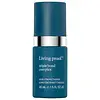What's inside
What's inside
 Key Ingredients
Key Ingredients

 Benefits
Benefits

 Concerns
Concerns

 Ingredients Side-by-side
Ingredients Side-by-side

Water
Skin ConditioningCetyl Alcohol
EmollientGlyceryl Stearate
EmollientIsodecyl Oleate
EmollientIsopentyldiol
HumectantDioctyldodecyl Dodecanedioate
EmollientSodium Phytate
Phytosteryl/Octyldodecyl Lauroyl Glutamate
Skin ConditioningOlea Europaea Leaf Extract
PerfumingHelianthus Annuus Seed Wax
Skin ConditioningJojoba Esters
EmollientLinoleamidopropyl Dimethylamine Dimer Dilinoleate
Skin ConditioningC10-18 Triglycerides
EmollientRicinus Communis Seed Oil
MaskingGlyceryl Ricinoleate
EmollientCyclodextrin
AbsorbentPropanediol
SolventGlycerin
HumectantPentylene Glycol
Skin ConditioningCeteth-20
CleansingSteareth-20
CleansingPEG-75 Stearate
Polyglycerin-3
HumectantHydroxypropyl Methylcellulose
Emulsion StabilisingCyamopsis Tetragonoloba Gum
Emulsion StabilisingHydroxyethylcellulose
Emulsion StabilisingXanthan Gum
EmulsifyingCaesalpinia Spinosa Gum
Skin ConditioningParfum
MaskingCitric Acid
BufferingSodium Hydroxide
BufferingGluconic Acid
Hydroxyacetophenone
AntioxidantSodium Benzoate
MaskingLinalool
PerfumingHexyl Cinnamal
PerfumingCitronellol
PerfumingCitral
PerfumingLimonene
PerfumingWater, Cetyl Alcohol, Glyceryl Stearate, Isodecyl Oleate, Isopentyldiol, Dioctyldodecyl Dodecanedioate, Sodium Phytate, Phytosteryl/Octyldodecyl Lauroyl Glutamate, Olea Europaea Leaf Extract, Helianthus Annuus Seed Wax, Jojoba Esters, Linoleamidopropyl Dimethylamine Dimer Dilinoleate, C10-18 Triglycerides, Ricinus Communis Seed Oil, Glyceryl Ricinoleate, Cyclodextrin, Propanediol, Glycerin, Pentylene Glycol, Ceteth-20, Steareth-20, PEG-75 Stearate, Polyglycerin-3, Hydroxypropyl Methylcellulose, Cyamopsis Tetragonoloba Gum, Hydroxyethylcellulose, Xanthan Gum, Caesalpinia Spinosa Gum, Parfum, Citric Acid, Sodium Hydroxide, Gluconic Acid, Hydroxyacetophenone, Sodium Benzoate, Linalool, Hexyl Cinnamal, Citronellol, Citral, Limonene
Water
Skin ConditioningDipropylene Glycol
HumectantCetyl Ethylhexanoate
EmollientCetearyl Alcohol
EmollientCetyl Alcohol
EmollientDimethicone
EmollientDicaprylyl Carbonate
EmollientCyclopentasiloxane
EmollientStearamidopropyl Dimethylamine
EmulsifyingAmodimethicone
Cetyl Esters
EmollientParfum
MaskingPPG-3 Caprylyl Ether
SolventLactic Acid
BufferingDimethiconol
EmollientArginine
MaskingMaleic Acid
BufferingButylene Glycol
HumectantGlyceryl Caprylate
EmollientRosa Damascena Flower Water
MaskingTrideceth-10
CleansingEthylhexylglycerin
Skin ConditioningDisodium EDTA
Polyquaternium-51
Skin ConditioningPhenoxyethanol
Preservative1,2-Hexanediol
Skin ConditioningCamellia Japonica Seed Oil
EmollientCarthamus Tinctorius Flower Extract
Skin ConditioningDextrin
AbsorbentVitis Vinifera Seed Oil
EmollientCaprylic/Capric Triglyceride
MaskingGlyceryl Linoleate
EmollientAcetic Acid
BufferingCapsicum Annuum Extract
MaskingGlyceryl Linolenate
EmollientMalt Extract
Skin ProtectingTocopherol
AntioxidantGlyceryl Arachidonate
EmollientMacadamia Ternifolia Seed Oil
EmollientSorbitol
HumectantBiotin
AntiseborrhoeicAscorbyl Palmitate
AntioxidantCaprylyl Glycol
EmollientLimonene
PerfumingCI 40800
Cosmetic ColorantWater, Dipropylene Glycol, Cetyl Ethylhexanoate, Cetearyl Alcohol, Cetyl Alcohol, Dimethicone, Dicaprylyl Carbonate, Cyclopentasiloxane, Stearamidopropyl Dimethylamine, Amodimethicone, Cetyl Esters, Parfum, PPG-3 Caprylyl Ether, Lactic Acid, Dimethiconol, Arginine, Maleic Acid, Butylene Glycol, Glyceryl Caprylate, Rosa Damascena Flower Water, Trideceth-10, Ethylhexylglycerin, Disodium EDTA, Polyquaternium-51, Phenoxyethanol, 1,2-Hexanediol, Camellia Japonica Seed Oil, Carthamus Tinctorius Flower Extract, Dextrin, Vitis Vinifera Seed Oil, Caprylic/Capric Triglyceride, Glyceryl Linoleate, Acetic Acid, Capsicum Annuum Extract, Glyceryl Linolenate, Malt Extract, Tocopherol, Glyceryl Arachidonate, Macadamia Ternifolia Seed Oil, Sorbitol, Biotin, Ascorbyl Palmitate, Caprylyl Glycol, Limonene, CI 40800
Alternatives
Ingredients Explained
These ingredients are found in both products.
Ingredients higher up in an ingredient list are typically present in a larger amount.
Cetyl Alcohol is a fatty alcohol. Fatty Alcohols are most often used as an emollient or to thicken a product.
Its main roles are:
Though it has "alcohol" in the name, it is not related to denatured alcohol or ethyl alcohol.
The FDA allows products labeled "alcohol-free" to have fatty alcohols.
Learn more about Cetyl AlcoholLimonene is a fragrance that adds scent and taste to a formulation.
It's found in the peel oil of citrus fruits and other plants such as lavender and eucalyptus. The scent of limonene is generally described as "sweet citrus".
Limonene acts as an antioxidant, meaning it helps neutralize free radicals.
When exposed to air, oxidized limonene may sensitize the skin. Because of this, limonene is often avoided by people with sensitive skin.
The term 'fragrance' is not regulated in many countries. In many cases, it is up to the brand to define this term. For instance, many brands choose to label themselves as "fragrance-free" because they are not using synthetic fragrances. However, their products may still contain ingredients such as essential oils that are considered a fragrance.
Learn more about LimoneneParfum is a catch-all term for an ingredient or more that is used to give a scent to products.
Also called "fragrance", this ingredient can be a blend of hundreds of chemicals or plant oils. This means every product with "fragrance" or "parfum" in the ingredients list is a different mixture.
For instance, Habanolide is a proprietary trade name for a specific aroma chemical. When used as a fragrance ingredient in cosmetics, most aroma chemicals fall under the broad labeling category of “FRAGRANCE” or “PARFUM” according to EU and US regulations.
The term 'parfum' or 'fragrance' is not regulated in many countries. In many cases, it is up to the brand to define this term.
For instance, many brands choose to label themselves as "fragrance-free" because they are not using synthetic fragrances. However, their products may still contain ingredients such as essential oils that are considered a fragrance by INCI standards.
One example is Calendula flower extract. Calendula is an essential oil that still imparts a scent or 'fragrance'.
Depending on the blend, the ingredients in the mixture can cause allergies and sensitivities on the skin. Some ingredients that are known EU allergens include linalool and citronellol.
Parfum can also be used to mask or cover an unpleasant scent.
The bottom line is: not all fragrances/parfum/ingredients are created equally. If you are worried about fragrances, we recommend taking a closer look at an ingredient. And of course, we always recommend speaking with a professional.
Learn more about ParfumWater. It's the most common cosmetic ingredient of all. You'll usually see it at the top of ingredient lists, meaning that it makes up the largest part of the product.
So why is it so popular? Water most often acts as a solvent - this means that it helps dissolve other ingredients into the formulation.
You'll also recognize water as that liquid we all need to stay alive. If you see this, drink a glass of water. Stay hydrated!
Learn more about Water